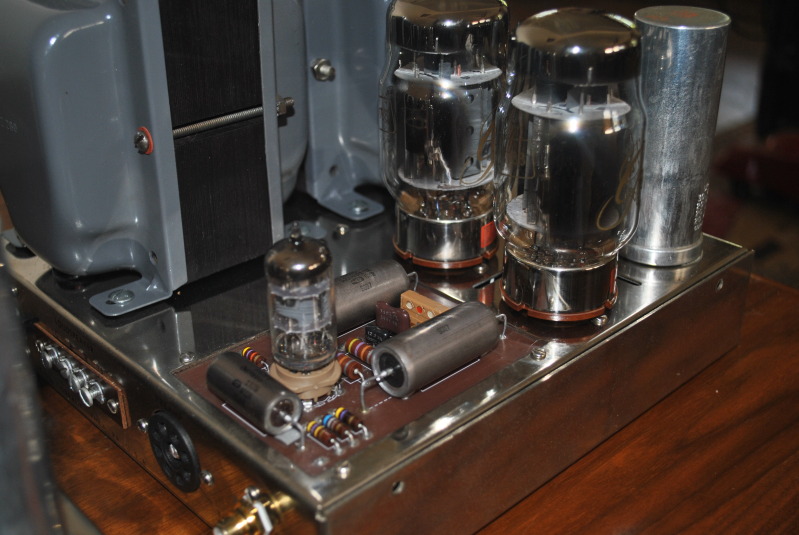 by harpy Wed Jul 11, 2012 1:13 pm
by harpy Wed Jul 11, 2012 1:13 pm
The candle sticks were removed and K40-Y9 were installed and the finally the second amp is finally built.

The Dynakit board has two solder points for each cap, so I put some high temp double sided foam tape over the inner hole so the metal bodies of the K40's wouldn't touch the contact.

K40's installed.

Shot of both amps.
I built both by the manual and they retain the stock circuit, with the exception of the SDS Labs quad cap board, but that only gives more capacitance. The only original parts are the transformers, the chassis, power cords, and fuse holders. The rest of the parts are from Dynakit with the exception of the SDS board. There was a build error in the first amp. The bias resistors were the wrong value (stock 11.2 ohm instead of the 10 ohms that came with the dual bias kit.

My line in voltage was 121 Vac which probably would be fine, but I added a soft start and voltage bucker which knocks it down about 3 Vac. I measured the voltages of both amps and they were pretty much spot on.
My speakers are DQ-10's crossed over at about 60 Hz and are not an easy speaker to drive. I drove the amps pretty hard for 4 hours, both power transformers were 133.3 degrees F after the session. I was surprised how much different they sounded from the MkIV's they replaced. I thought the MkIV's had a sweeter sound, larger sound stage, while the MKIII's were faster, more dynamic, and detailed (both stock circuit with similar caps). The problem with the MKIV's was they were under powered for the DQ-10's and ran very hot and lacked the punch for demanding music at volume.
I want to listen to the MkIII’s for a bit and make sure no problems arise and get to know their sonics better. After that I may try the Russian Teflon Caps to see if I can hear difference between the coupling caps and then down road start looking at VTA driver boards.












